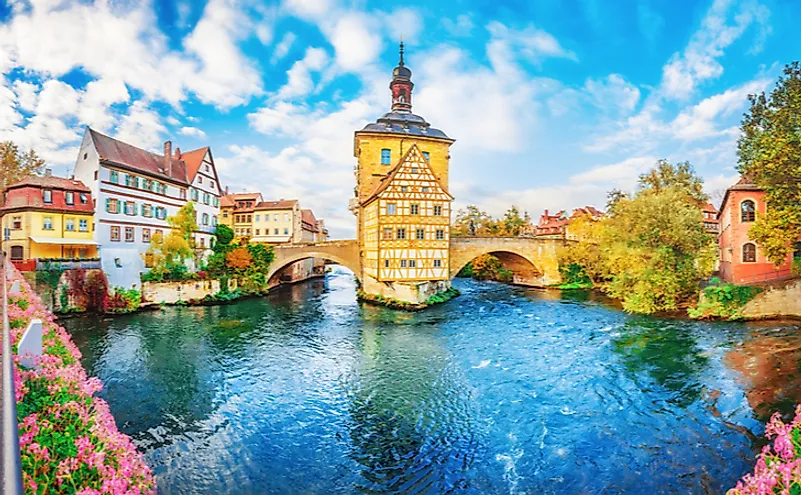Which Country is Bavaria In?

Bavaria is a landlocked German federal state that is situated in the southeastern corner of Germany. It is the largest German state which occupies a fifth of Germany’s land area. Bavaria has an area of about 27,200 sq miles and a population of about 13 million. It is the second most populous German state right after North Rhine-Westphalia. Bavaria’s main cities include Augsburg, Nuremberg, and Munich (the third-largest German city). Bavaria has the second biggest economy in the country, and it is referred to as a wealthy German state. Its GDP exceeded $600 billion in 2007, making Bavaria one of the biggest economies in Europe.
Geography Of Bavaria
Bavaria has international boundaries with Switzerland, Czech Republic (South Bohemian, Plzen, and Karlovy Vary Regions), and Austria (Vorarlberg, Upper Austria, Tyrol, and Salzburg). Since all these nations are in the Schengen Area, their boundaries are usually open. Bavaria’s neighboring states in Germany include Saxony, Thuringia, Hesse, and Baden-Wurttemberg. The Bavarian Alps defines the border between Austria and Bavaria while the Bohemian Forest and Bavarian Forest form a considerable percentage of the frontier with Bohemia and the Czech Republic. Bavaria includes part of historical regions of Swabia and Franconia. The 2 major rivers flowing through the city include the Main and Danube. The geographic center of the EU is situated on the northwestern corner of this German state.
When Did Bavaria Become A German State?
The history of Bavaria dates back to the first century when it was conquered by the Romans. The Romans incorporated it into Noricum and Raetia provinces. After the Western Roman Empire collapsed during the sixth century AD, Bavaria became the stem duchy. It later became a part of the Holy Roman Empire. The Bavaria Kingdom was established in 1806 after the Holy Roman Empire was abolished by Napoleon. Bavaria’s area doubled after they annexed the present-day Palatinate region.
After the Prussian Kingdom rose to power during the eighteenth century, Bavaria kingdom retained its independence by playing-off the rivalry between Austria and Prussia. Bavaria was allied to Austria, and they were defeated by Prussian in 1866. However, after the Prussian-Austria war ended, Bavaria did not join the North-German confederation. After France declared war on the Prussian Kingdom, various German states including Bavaria and Wurttemberg, joined the Prussian military in 1870, ultimately creating a federation that was renamed the German Kingdom. Bavaria continued being a monarch under the federation and still enjoyed various special rights including postal services, railways, and army. The Bavarian kingdom existed until 1918 when it became a republic. Bavaria became a state of Germany in 1949.
Demographics
Bavaria had a population of about 12.9million in 2016 and a population density of approximately 470individuals per square mile (below the national average 590 people per square mile). 8 out the 80 largest German cities are situated in Bavaria with Munich being home to over 1.45 million people, followed by Nuremberg and Augsburg. Most of the cities in Bavaria had a population of fewer than 150,000 people by 2015. The foreign nationals living in Bavaria are mainly from Turkey and all the EU member states.











